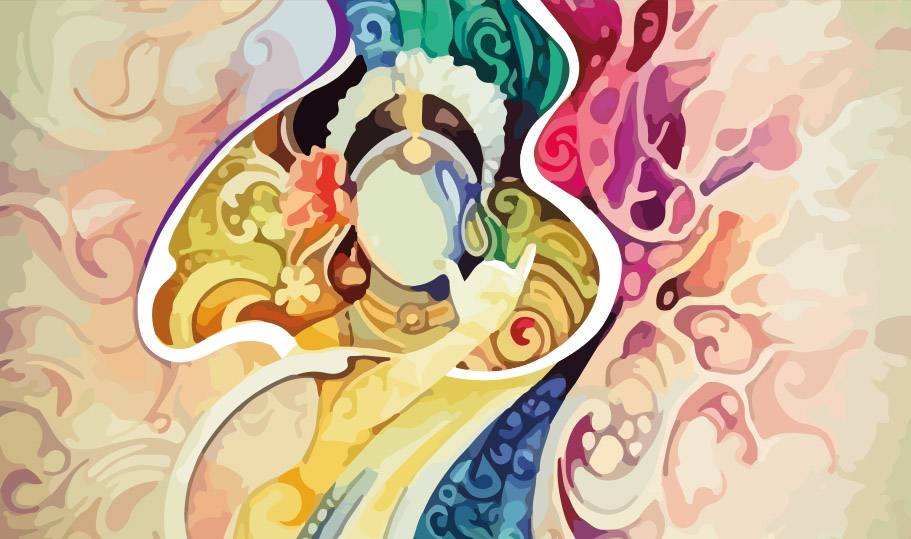
- Home
- News
- Analysis
- States
- Perspective
- Videos
- Education
- Entertainment
- Elections
- World Cup 2023
- Features
- Health
- Business
- Series
- Economy Series
- Earth Day
- Kashmir’s Frozen Turbulence
- India@75
- The legend of Ramjanmabhoomi
- Liberalisation@30
- How to tame a dragon
- Celebrating biodiversity
- Farm Matters
- 50 days of solitude
- Bringing Migrants Home
- Budget 2020
- Jharkhand Votes
- The Federal Investigates
- The Federal Impact
- Vanishing Sand
- Gandhi @ 150
- Andhra Today
- Field report
- Operation Gulmarg
- Pandemic @1 Mn in India
- The Federal Year-End
- The Zero Year
- Premium
- Science
- Brand studio
- Home
- NewsNews
- Analysis
- StatesStates
- PerspectivePerspective
- VideosVideos
- Entertainment
- ElectionsElections
- Sports
- Loading...
Sports - Features
- BusinessBusiness
- Premium
- Loading...
Premium

Why 'progressive' south India is unable to shun the Devadasi system
Banning a practice such as devadasi system is ineffective. One can only hope that after nearly a century since they were first banned, devadasis can finally break free and live a life of dignity and freedom.

‘Sasthra dinda agada kelasa Shastra dinda aguhodu’ [Things that don’t happen by weapons will happen by teachings] is a temple priest’s simple motto to eradicate the exploitative practice of devadasi system in South India. In 2017, Carnatic singer TM Krishna stirred a hornet’s nest when he remarked that renowned Carnatic legend MS Subbulakshmi distanced herself from her...
‘Sasthra dinda agada kelasa Shastra dinda aguhodu’ [Things that don’t happen by weapons will happen by teachings] is a temple priest’s simple motto to eradicate the exploitative practice of devadasi system in South India.
In 2017, Carnatic singer TM Krishna stirred a hornet’s nest when he remarked that renowned Carnatic legend MS Subbulakshmi distanced herself from her devadasi background towards Brahmanism to become an ‘ideal Brahmin woman’ and gain acceptance from the audience. Contentious as his comment may be, for the many devadasi women who continue to languish in South Indian communities, a historically reverse shift from reverence towards exploitation stands true.
Devadasis are young girls who get dedicated as servants (dasi) of the god (deva) for the rest of their lives. In principle, they are married to the deity but their sexual selves are open for exploitation by family and society alike.
Historically, devadasis were custodians of art, culture and dance, and had security, respect and patronage from society. In fact, the Bharatanatyam evolved in the 1930s as a sanitized and de-eroticized version of Sadir, the cultural and historic dance form of the Devadasis.
At the height of the practice, devadasis received the patronage of the kings and the wealthy. For many, it was a welcome freedom from their otherwise inevitable role as wives in the patriarchal trap.
However, over time, roles changed. The sexual abuse of devadasis by priests and the royalty became an open secret. This prompted the first ban in 1924 on the system in the British era.
The shifting of their dedication ceremony, from temples to the privacy of homes following the ban made interventions harder for the women who were already battling religious and superstitious burden and poor socio-economic conditions.
Devadasi dedication tradition
Most devadasis are dedicated when they’re too young to understand what the practice means. They come from families already having a devadasi. Continuing the tradition was considered a religious duty to avoid the wrath of gods. Any familial crisis furthered the idea of dedication as a bribe to the deities.
The devadasi system is also considered a refuge for adolescent girls who are unlikely to find a groom for medical reasons. In parts of Karnataka, young girls who were pursued and proposed by boys were dedicated to goddesses to save the family honour. This showed women’s lack of agency in their own marriage, whether to the divine or to a mortal being.
Once these girls reach puberty, they are initiated into sexual transactions, where men bid and pay their families for their first sexual transaction. Men who associated with devadasis provided some assistance, but it was never an obligation. Any child born of such associations wasn’t entitled to any social or financial security from the father.
Last year, a woman in Karnataka alleged that she was being tricked into becoming a devadasi by her mother and a man she was in a relationship with. It was later revealed that he refused to marry her because she was a Dalit.
Contemporary practices in the devadasi system see women from scheduled castes and other lower castes, classes and communities being dedicated as devadasis. During the first movement that called for a ban of the devadasi practice, upper caste communities such as Brahmins called for continuing the practice, to preserve the art and dance form.
However, 85 years after the Bombay Devadasis Protection Act (1934), 72 years after the Tamil Nadu Devadasis (Prevention of Dedication) Act (1947), 37 years after the Prohibition of Dedication Act (1982) of Karnataka, and 31 years after the Andhra Pradesh Devadasis (Prohibition of dedication) Act (1988), the devadasi system is still prevalent in southern India.
Unreliable data
A government-led survey in 2008 pegged the number of devadasis in Karnataka at 30,000, up from the 22,873 identified in 1994. However, the National Commission for Women (NCW) claims there were about 2.5 lakh Dalit girls who were dedicated to temples along the Karnataka–Maharashtra border.
Officials in charge of the Devadasi Rehabilitation Programme (DRP) in Bellary, Karnataka, claim that no new devadasis were dedicated after 2008, when the last survey was carried out.
NCW’s report on devadasi practice notes that the Social Welfare Department of Tamil Nadu denied the existence of devadasis and cited this as an excuse for lack of rehabilitation programmes. In 2016, the Supreme Court was told that laws have completely abolished devadasi practice in Karnataka and Maharashtra.
In 2017, the National Human Rights Commission noted instances of girls being forced into devadasi system in Thiruvallur, Tamil Nadu, and called for reports from the government. The statistics received from Karnataka State Devadasi Women’s Liberation about the existence of about one lakh devadasis stand in sharp contrast.
In 2015, the Union Home Ministry asked state governments to implement their individual domestic laws that prohibit the practice, and also conduct identification surveys. The mismatch in numbers has caused the biggest policy hurdle, requiring better programmes to prevent more dedications and ensure a budget for rehabilitation.
Bureaucratic hurdles
The benefits entitled to devadasis under the DRP require Devadasi cards, which most of them do not possess. Bureaucratic blockade prevents new devadasis from enrolling under DRP, since officials have not been authorised to enrol girls who have become devadasis after the 2008 survey.
Without rehabilitation options such as housing and pension schemes, devadasis often return to the only options they know — sustenance from temples and optional patronage from sexual partners or money earned from sexual transactions in brothels.
In early 2019, the third State Conference of Karnataka State Devadasi Women’s Liberation demanded a monthly pension of ₹5,000 to all devadasi women, an increase from the ₹1,500 the state government was forced to provide after a mass demonstration in 2007.
Tackling the systematic problem of devadasi practice is a state-level issue and there is no centralised policy enlisted for devadasis.
Institutional loopholes
Criminal provisions provide for the arrest of mothers who push their daughters into being devadasis. But daughters are unlikely to report their mothers due to vulnerability and societal shame that would follow. The last known numbers were of 45 cases booked in Karnataka, out of which only one case made conviction.
State-run shelter homes have proven to be useful for preventing the dedication, but sustaining them need the support from community elders and temple priests, which is rare. Central agencies such as National Human Rights Commission or even the National Commission of Women, can only submit their disappointment in notices. The responses of the states vary according to political will.
And therefore banning a practice such as devadasi system is ineffective. Unless we address the various layers of socio-economic disadvantage, religious and superstitious beliefs and the cultural acceptance of the devadasi practice, penal action is not enough to eradicate this cyclical system.
The Karnataka government is all set to conduct an in-depth survey of the socio-economic and cultural practices of about 46,660 devadasi women. The aim of the survey is to formulate new and relevant rehabilitation policies for devadasis.
One can only hope that after nearly a century since they were first banned, through the outcomes of this survey, devadasis can finally break free from their threads and live a life of dignity and freedom.
(Sonam Mittal is a feminism activist and writer who has worked on issues regarding the environment, human rights and gender equality.)
(The Federal seeks to present views and opinions from all sides of the spectrum. The information, ideas or opinions in the articles are of the author and do not necessarily reflect the views of The Federal.)

